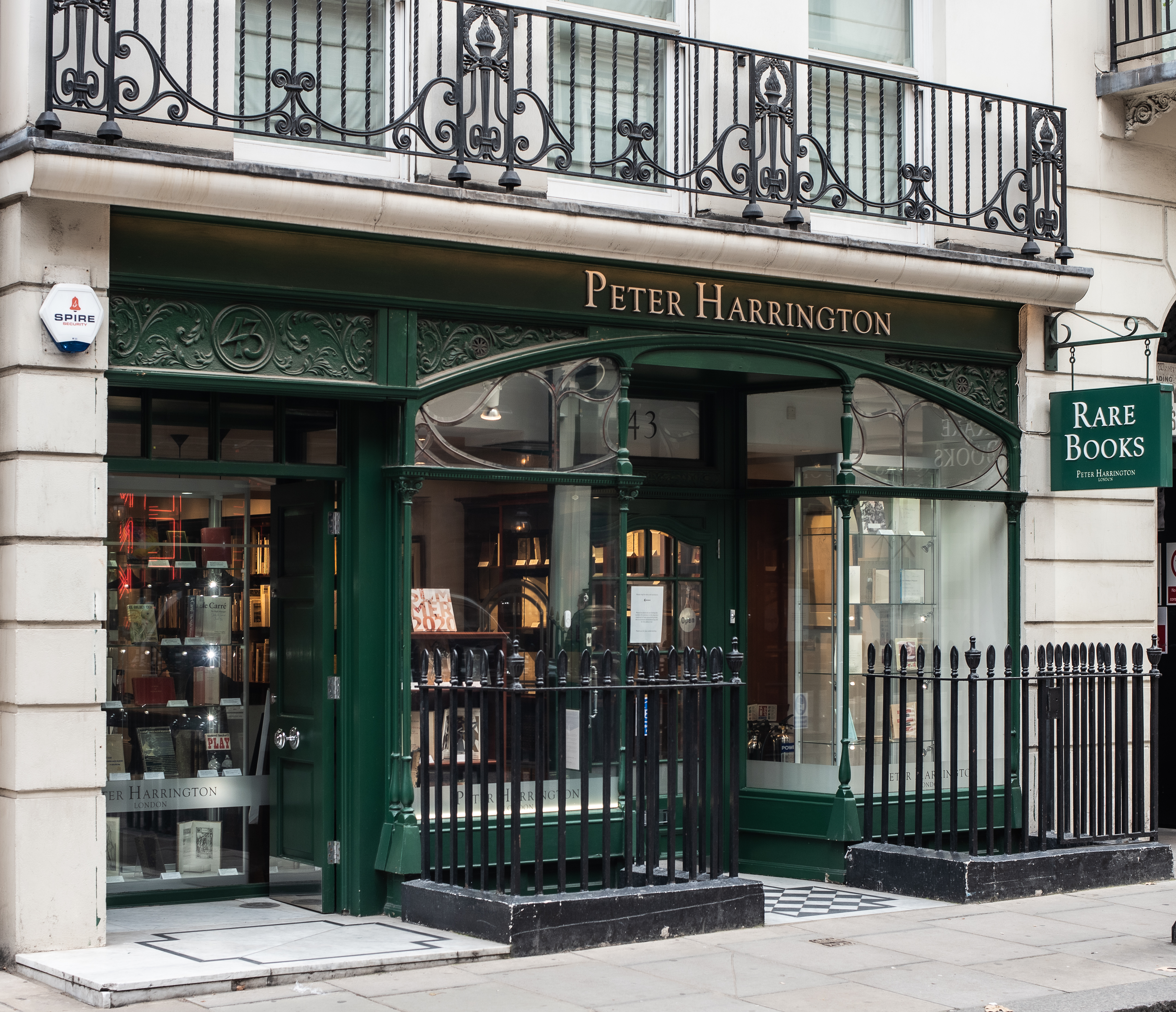London: [vol. I] printed [by Thomas Ratcliffe and Edward Mottershead] for Richard Baddeley; [vols. II & III] printed for Richard Baldwin,, 1653-93-94. First edition in English of Les Cinq livres des faits et dits de Gargantua et Pantagruel (c. 1532 - c. 1564), the work of two different translators published episodically over more than 40 years and so rarely found complete. An eccentric Scottish writer of stylistic and verbal virtuousity, or, in his own terms, a "logofascinated spirit" (Works, 231), Sir Thomas Urquhart has been considered by many a splendid match for his subject. "This translation has been called 'one of the most perfect transfusions of an author from one language into another that ever man accomplished'" (Pforzheimer 814). "In Rabelais, Urquhart found a writer whose style and imagination matched his own. Both 'cultivated a taste for a copious, robust and original vocabulary. To each of them, imagination
furnished a rare selection of racy words in extraordinary abundance' (Roe, 11)" (ODNB). Urquhart's translation of Rabelais was his final work. The first volume (books I and II) appeared in 1653 and was reprinted in 1664, by which time Urquhart had, according to family legend, died laughing on hearing of Charles II's restoration. The third book, left unfinished by him and completed by the Huguenot emigré Peter Anthony Motteux (formerly Pierre-Antoine Le Motteux), appeared in 1693. Motteux's translation of books IV and V was published in 1694, bringing the cycle to completion. Motteux also published a revision of Urqhart's first two books, but the present set retains the original Urqhuart translation of that part. Rabelais "is often censured for his lapses into gross indecency and his physiological and medical obscenities. These may be explained partly as the work of an irrepressible jester writing for a coarse, outspoken society... His work incensed the theologians and was condemned by the parlement. He issued a revised edition of the first two books, attenuating his insulting references to the theologians, but it failed to placate the Sorbonne and both books were again condemned... Moliere drew on him, Voltaire and Balzac imitated him, but many have censured his obscenity" (Reid, 509-10). Rabelais had been known in England before this translation; to quote or name him was to signal one's intellectual credentials. A list of those who quoted or alluded to Rabelais before he was translated includes Ben Jonson, John Donne, John Webster, Francis Bacon, Robert Burton, and James I. Celia in Shakespeare's As You Like It mentions "Gargantua's mouth" as if it were already proverbial. Yet Rabelais's fame and influence increased after Urquhart's translation: his presence is strongly felt in Gulliver's Travels and Tristram Shandy. In spite of Joyce's well-known assertion that he had not read Rabelais, he clearly absorbed his work, as demonstrated by Finnegans Wake. Laid in is a hand-written letter dated 27 February 1925 from the London dealers Pickering & Chatto to the library of the Cleveland Chamber of Commerce describing the set they have despatched as the "finest we have ever possessed or even seen." 5 vols bound in three as usual, octavo and duodecimo (therefore slightly varying sizes: vol. Books I-II and IV-V each in 2 parts, with separate title pages, pagination, and register. Book III with engraved frontispiece portrait of Rabelais with quote from Theodorus Beza dated 1552, here bound after the title. Book V with full-page woodcut of the "holy bottle" on K4r. I, 166 x 107 mm; vol. II, 152 x 89 mm; vol. III, 155 x 90 mm). Skilfully rebound to match in full mottled calf, spines richly gilt in compartments, red morocco labels. Book III with the 6 contents leaves moved from end to after the title, engraved portrait of Rabelais with small repair at lower outer corner. Book I-II contents likely washed, book III with a little marginal staining at beginning and end, book IV-V clean; all vols a little tight in the gutter but still readable: overall, a very good set. ESTC R202203 & R202205 (noting, however, that apparently the two books were usually sold together), R26911, R2564; Pforzheimer 814, 815, 816.



![The First Book [Third Book; Fourth and Fifth Books] of the Works: Containing Five Books of the Lives, Heroick Deeds, and Sayings of Gargantua, And his Sonne Pantagruel... (photo 1)](https://d3525k1ryd2155.cloudfront.net/h/895/472/1564472895.0.x.jpg)
![The First Book [Third Book; Fourth and Fifth Books] of the Works: Containing Five Books of the Lives, Heroick Deeds, and Sayings of Gargantua, And his Sonne Pantagruel... (photo 2)](https://d3525k1ryd2155.cloudfront.net/h/895/472/1564472895.1.l.jpg)
![The First Book [Third Book; Fourth and Fifth Books] of the Works: Containing Five Books of the Lives, Heroick Deeds, and Sayings of Gargantua, And his Sonne Pantagruel... (photo 3)](https://d3525k1ryd2155.cloudfront.net/h/895/472/1564472895.2.x.jpg)
![The First Book [Third Book; Fourth and Fifth Books] of the Works: Containing Five Books of the Lives, Heroick Deeds, and Sayings of Gargantua, And his Sonne Pantagruel... (photo 4)](https://d3525k1ryd2155.cloudfront.net/h/895/472/1564472895.3.x.jpg)
![The First Book [Third Book; Fourth and Fifth Books] of the Works: Containing Five Books of the Lives, Heroick Deeds, and Sayings of Gargantua, And his Sonne Pantagruel... (photo 5)](https://d3525k1ryd2155.cloudfront.net/h/895/472/1564472895.4.x.jpg)
![The First Book [Third Book; Fourth and Fifth Books] of the Works: Containing Five Books of the Lives, Heroick Deeds, and Sayings of Gargantua, And his Sonne Pantagruel... (photo 6)](https://d3525k1ryd2155.cloudfront.net/h/895/472/1564472895.5.x.jpg)
![The First Book [Third Book; Fourth and Fifth Books] of the Works: Containing Five Books of the Lives, Heroick Deeds, and Sayings of Gargantua, And his Sonne Pantagruel... (photo 7)](https://d3525k1ryd2155.cloudfront.net/h/895/472/1564472895.6.x.jpg)




